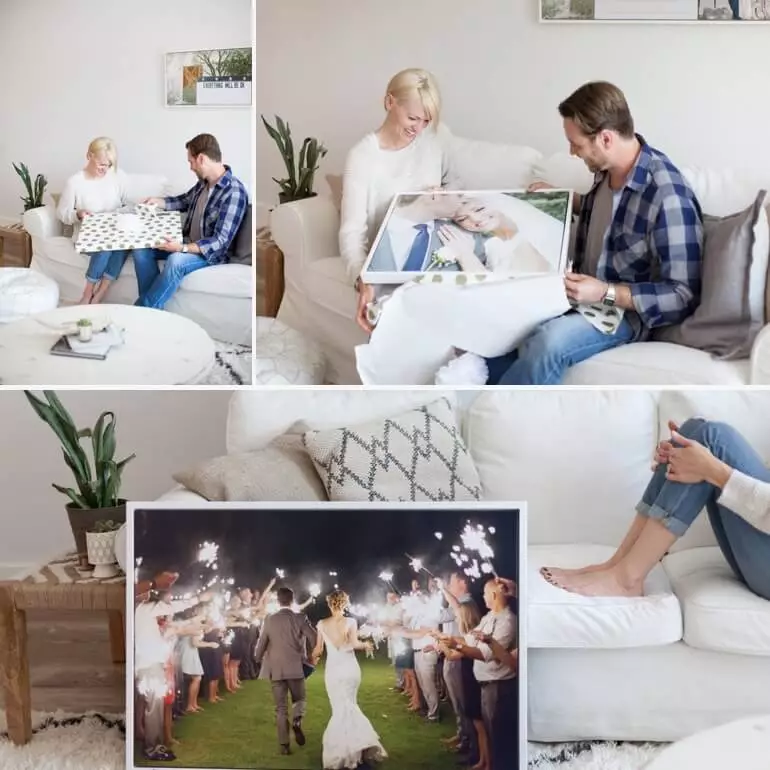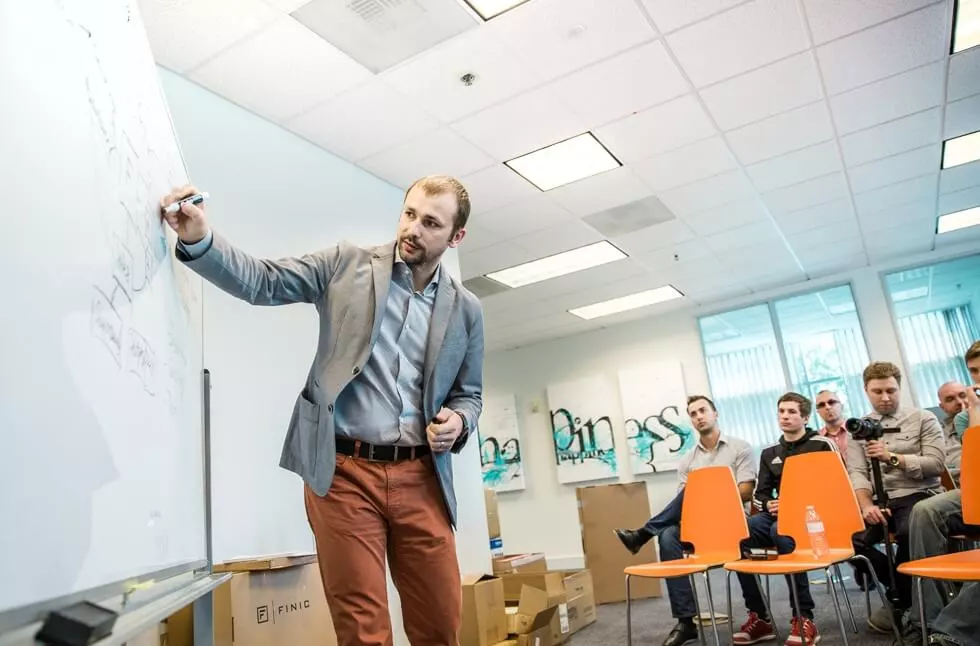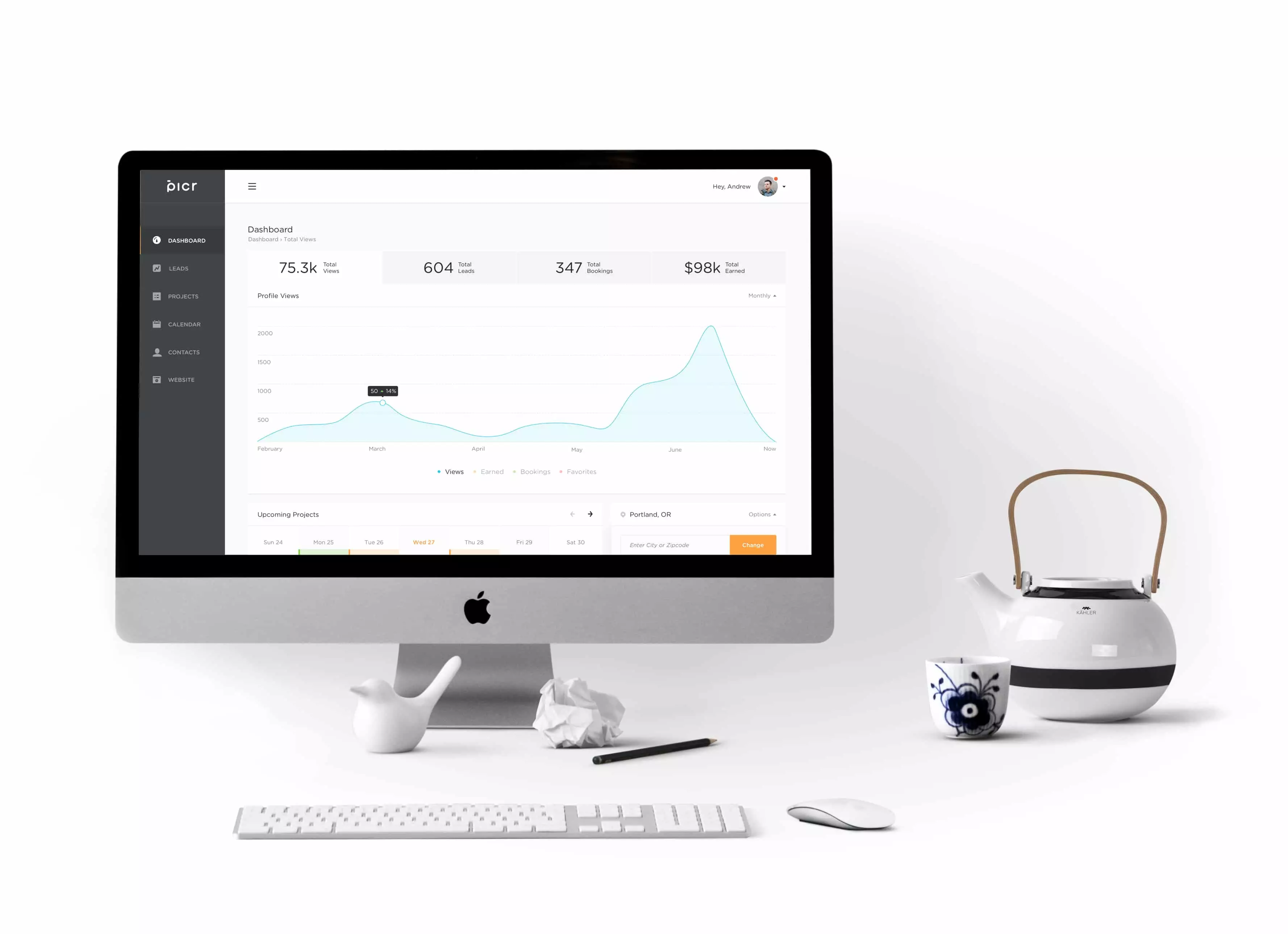The story of Bloom (formerly known as Picr) begins at a warehouse in Portland, OR as a startup offering high-end printing solutions for a consumer market dominated by low-quality prints. When ordering prints for his new home, Vitaliy Rizhkov, the initial founder, was baffled with his experience because all of the available options resulted in frustration. After ordering from 25 different labs and facing similar results, it was clear that an affordable high-quality printing solution was missing for both personal and commercial applications.

Part one: High-end printing
We rented a large shop, purchased the best possible equipment, found innovate and creative methods to create frames and canvas wraps, employed over 20 individuals, and launched the startup. At the same time, we built and launched an app for printing images from your phone and Instagram account. You could quickly and easily create a collage, select a frame, and expect your high-quality print within days.

Despite the enormous resources invested, a year after initiating the project we decided to pivot. The reasons were many, among which, was the fact that consumer wall art does not easily yield to repeat business and the cost of acquisition was too high. Furthermore, with our burn rate, we simply didn’t have time to establish the necessary relationships with interior designers and photographers. But the main reason for the pivot, was because found a far more interesting problem to solve.
The idea came to the founders in different ways and at different times. At one point, we needed to find a product photographer to take pictures of our prints and frames. When shopping around, we quickly realized that there was no convenient way to sort through the available local photographers and filter based on our needs. Eventually, we flew someone in from San Diego and our final bill was far more expensive than we planned. It became clear to us, that building an online marketplace where anyone could conveniently finding and book quality photographers, was a much more interesting problem for to solve.

Part two: Photography marketplace
In the world of tech startups, “Fail Fast” means that if you decide to pivot, it’s best to do it quickly. It’s like ripping off a band-aid. And that’s exactly what we did. We dismantled our shop, shut down the app, reorganized our workforce, and began to build a completely different product within days. While it hurt at first, we were quickly overtaken by the excitement of creating a photography marketplace. Fast forward 10 hard-working months, and we had a functional platform, a local community of nearly 300 photographers who had created accounts and set up profiles, thousands of photographers globally waiting for us to launch in their city, and a team of nearly 30 talented individuals hustling to make all this happen.

Every marketplace story has a similar thread: each one is insanely difficult. Of all the business models, marketplaces are among those with the lowest success rates and the reasons are abundant. When you build a marketplace, you must simultaneously build a good product for both sides of the market, solve the chicken-and-egg problem, successfully launch to both sides, and quickly obtain liquidity. Apart from the technical challenges of creating a lovable platform, marketplaces are not easy and not all industries are equally adaptable to an online marketplace experience.
Shortly after our marketplace launch, we realized that the photography industry is not an environment where a marketplace will easily sprout and blossom. Our marketing team alone had 9 people and covered everything from video creation to social media, community building, PR, Google & Facebook Ads, and other content production. But despite the vast resources invested, our traction was marginal and not sustainable.
By this point, we had been wrestling with big questions in the photography industry long enough to realize that we needed another pivot before we could succeed. Two major realizations became clear from our marketplace experience. We learned that in the eyes of many consumers, photography is a luxury commodity and the learning curve away from this mindset was too steep. Second, because photographers view their craft as personal and artistic, their methods do not easily yield to the standardized protocols a marketplace requires.

Part three: Photography ecosystem
After studying marketplaces in depth and analyzing nearly every marketplace attempt since 2012, we concluded that for a marketplace to work in the photography industry, it could only work in the context of an ecosystem. Thus we would need to create a platform where photographers could run their entire business and allow the marketplace to function as a powerful lead generator.
And just like before, as soon as we understood this, we acted quickly laying off more than half of our team, downsizing our office, reorganizing our company, and got to work rebuilding Picr from the ground up. Since that decision, nearly an entire year has passed during which we spent countless hours laboring over the best possible solutions for every feature.

We understood that many photographers struggle with growing their business and made it our goal to help photographers maximize their business profits. Our goal is to create the best possible studio management solution, grow a robust online community and eventually re-launch the marketplace.
Help us make Bloom your dream solution for growing a photography business to the limitless heights of your ambitions.
If you have been part of our journey from the beginning, please introduce yourself in the comments and let us know when you first joined us. Also, if you have any questions, we will hang out here and answer them promptly!